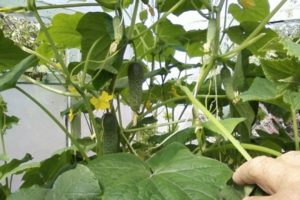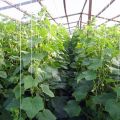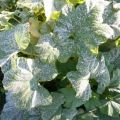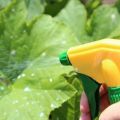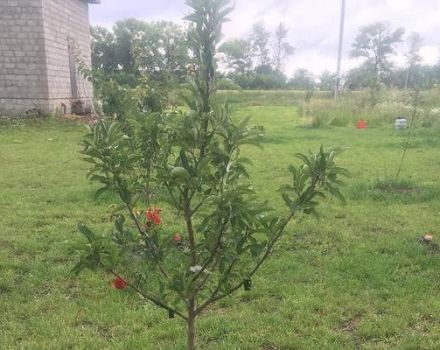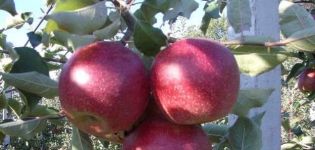When and how to properly plant cucumber seedlings in a greenhouse or greenhouse
A polycarbonate greenhouse has become commonplace at the summer cottage: the room guarantees a harvest in any weather. The first cucumbers in early June will ensure the planting of cucumber seedlings in the greenhouse in early May.
Content
- 1 Autumn greenhouse preparation
- 2 Soil preparation
- 3 Manure - fertilization and heating
- 4 Planting seeds for seedlings
- 5 The best varieties for greenhouses
- 6 Container and soil for sowing seeds
- 7 Seedling care
- 8 Landing dates
- 9 How to plant seedlings correctly
- 10 We organize the right care
- 11 Diseases and pests
- 12 Gardener errors
- 13 Collection of Zelentsy
- 14 Conclusion
Autumn greenhouse preparation
Greenhouse owners need to prepare for the new season in the fall. It is necessary to start cleaning the greenhouse immediately after collecting the last fruits: remove weeds, remnants of stems and roots of vegetable crops, remove stakes and garters.
Greenhouse processing
During the operation of a polycarbonate greenhouse, the walls become dusty, and less light is transmitted. Harmful microorganisms accumulate in the soil and on structural elements. In autumn, the greenhouse needs to be processed:
- wash;
- remove the topsoil;
- disinfect.
Wash with 72% soap and water, use a rag or soft sponge. The top layer of soil must be removed, because after the summer season they can inhabit:
- causative agents of tomato diseases;
- pests of vegetable crops;
- insect larvae.
At least 1 time in 2 years it is necessary to remove the top layer of soil (5-10 cm) in the greenhouse and take it out to the garden for restoration.
Disinfection of a greenhouse with a sulfur checker destroys fungal spores, viruses, bacteria. Processing must be carried out no later than October. To achieve the effect, observe the conditions:
- the air temperature in the greenhouse is not lower than 10 ° C;
- metal structural elements are covered with paint;
- the soil is dug up;
- doors and windows are hermetically sealed.
Soil preparation
Heavy use of the greenhouse depletes the soil. To restore fertility, organic matter (humus, compost), ash and mineral fertilizers must be applied annually.
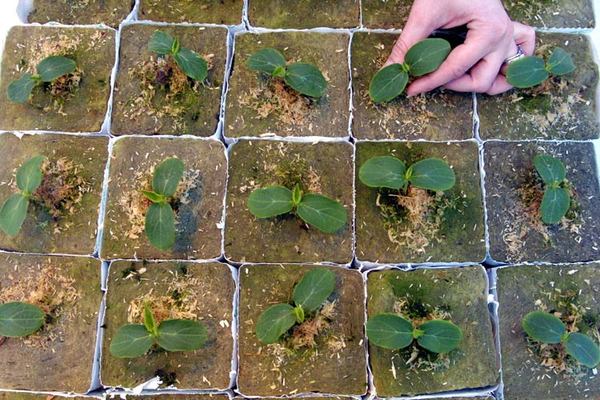
Organics, superphosphate, potassium nitrate and ash should be added in the fall for digging. Apply urea in the spring, two weeks before planting cucumber seedlings in the greenhouse.
After the autumn treatment with a sulfur checker, the biological product Baikal EM1 will help restore the balance of beneficial microorganisms in the soil.
Shed the soil with a biological product 7 days before planting the seedlings. When can you use it and what conditions to comply with:
- soil temperature - not lower than 15 ° C;
- solution temperature - 25 ° C.
Arrangement of beds
In summer, a hot season begins for gardeners, both literally and figuratively. On a sunny day, the temperature in the greenhouse is above 35 ° C. It is easier and faster to work in a well-equipped greenhouse.
It is necessary to plant cucumber seedlings in a greenhouse on well-prepared beds. It is worth adhering to the following rules:

- dig up the soil on the bayonet of the shovel;
- outline the ridges based on the size (width) of the greenhouse;
- form ridges 25 - 35 cm high;
- ridge width - 60 cm;
- row spacing - 70 - 80 cm.
Make bumpers of wood, slate, galvanized iron or plastic near the ridges.
The advantages of a fenced ridge are tangible:
- neat ridges - a beautiful greenhouse;
- the earth does not pour into the paths;
- water does not drain from the ridges;
- easier to fertilize - the aqueous fertilizer solution does not spread around the greenhouse.
In addition to the ridge, you need to build a trellis at the same time. To tie the twine, you can use both thick steel wire with a cross section of 2 - 3 mm, and thin bars of 25 * 40 mm.
Manure - fertilization and heating
If there is an opportunity to buy cattle manure, buy and equip with it comfortable conditions for cucumber seedlings in a greenhouse. To do this, in the center of the ridge, you need to dig a trench: depth 50 - 60 cm, width - 30 cm.
Lay fresh manure 30 - 35 cm thick down and cover it with earth from the ridge. The soil layer above the manure is 25 cm. In 5 - 7 days, fresh, compacted manure will begin to "burn", generate heat and warm the ground.
In the summer, decaying, mullein will supply greenhouse plants with nitrogen. Planting cucumber seedlings in a greenhouse in the presence of biofuel (manure) is the most economical and easy-to-implement way to obtain early greens. We will learn how to transplant seed-grown cucumbers.
Planting seeds for seedlings
You can significantly bring the time of harvesting zelentsy closer if you plant seedlings with seeds in April. The choice of the variety plays an important role. To get early production, you need to choose ultra-early hybrids or varieties for greenhouses.
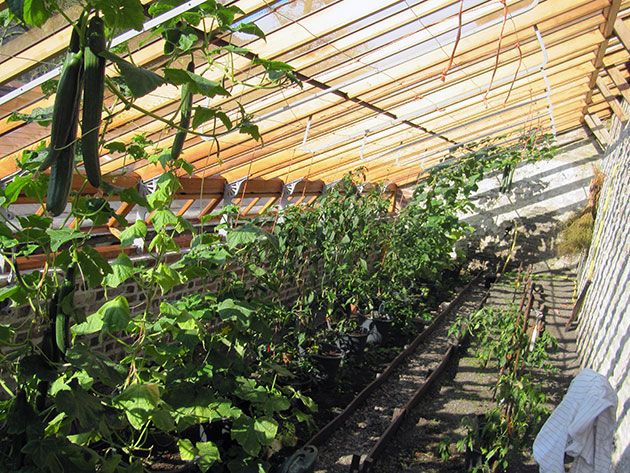
Late and mid-late canned cucumbers are ideal for winter harvesting.
The best varieties for greenhouses
Of the many varieties of cucumbers, only two groups should be considered:
- self-pollinated;
- non-pollinated (parthenocarpic).
Bees and other insects pollinate plants growing outdoors. In the greenhouse, crops have to be pollinated artificially or the right choice of varieties that do not require pollination with female flowers.
Choosing varieties
Novice gardeners can be advised for the new season by a proven hybrid from Holland - Herman F1. Having chosen it, people will definitely not be left without cucumbers. A stable yield is typical for the variety. Timely transplantation of seedlings into a greenhouse or greenhouse in April-May - and greens can be eaten in 36 days. Commercial cucumbers with light spikes are an excellent raw material for winter harvesting. Delicious, crispy lightly salted cucumbers are prepared from them in the summer.

It is necessary to take note of another fruitful hybrid from Holland - Courage. Its fertility - 25 kg per bush - will not leave anyone indifferent, and resistance to diseases and pests is out of competition. The fruits are good in any form. Kurazh is usually propagated by seedlings to obtain early production, by seeds for harvesting and autumn consumption.
Container and soil for sowing seeds
Cucumbers do not like transplanting. A separate planting container in the form of peat cups will solve this problem. The container volume must be at least 400 - 500 ml. This size is enough to get full seedlings.
In the lower part of the container, it is worth making holes with a diameter of 3 - 4 mm, which are needed for the outflow of excess water and ventilation of the roots. Place the containers in a plastic pallet 3-4 cm high.
The soil can be prepared in the fall. Take 1 part:
- forest or garden land;
- peat;
- humus;
- rotted sawdust.
Mix all components well and add 1 tbsp. l. ash and any complex fertilizer at the rate. Before planting the seeds (in 14 days), pour the mixture prepared since autumn with the biological product "Baikal EM1". In the absence of, you can confine yourself to a disinfectant solution of potassium permanganate. It is simple to prepare it: take a few crystals and stir in settled water until a deep pink color is obtained.
The biological product stimulates the development of beneficial microorganisms, potassium permanganate kills harmful microbes and fungi.
To plant seedlings in spring on time:
- containers can be filled with soil in the fall;
- put in a greenhouse for the winter;
- throw snow.
When the time comes for sowing seeds, bring them into a warm room to thaw and warm the soil.
We deal with seeds
Have you bought seeds, checked the harvest year or expiration date? We read the instructions on the bag. If it says that the seeds have been processed, we consider that they are ready for planting.
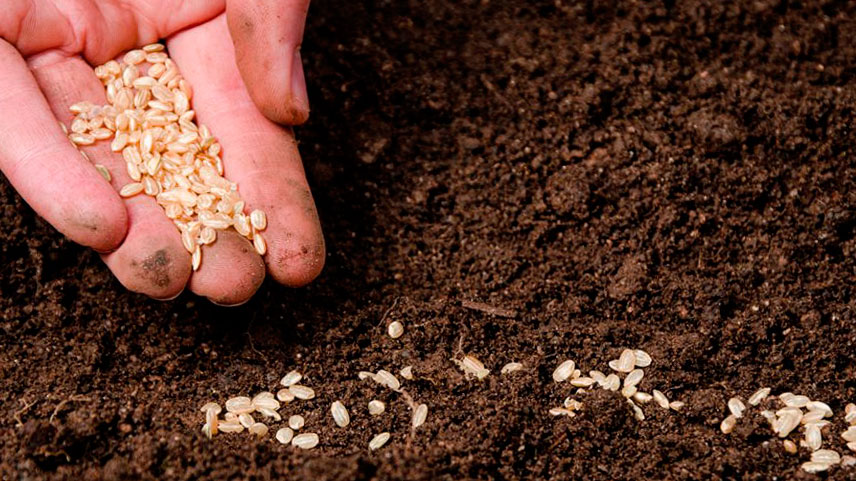
It is necessary to prepare if there is no such information and the seeds are white, without hints of processing. Of course, you can drop them straight out of the bag, but it's better not to risk it. If the seeds are infected, it will take longer to heal.
Do not take seeds with an expired shelf life: they retain their germination capacity for no more than 2 years.
We prepare as follows:
- warm up the seeds on the battery;
- inspect visually, discard seeds with mechanical damage;
- to lower the selected seeds into salt water - discard those that surfaced;
- drain the water, dry the seeds and use for planting.
We sow the seeds
Moisten the ground if the soil is dry. Make indentations in the center of the glass with your finger or a marker. Place seeds in them. Sprinkle with soil with a layer of 1.5 cm. Cover the trays with seedlings with cellophane and place them near the battery.
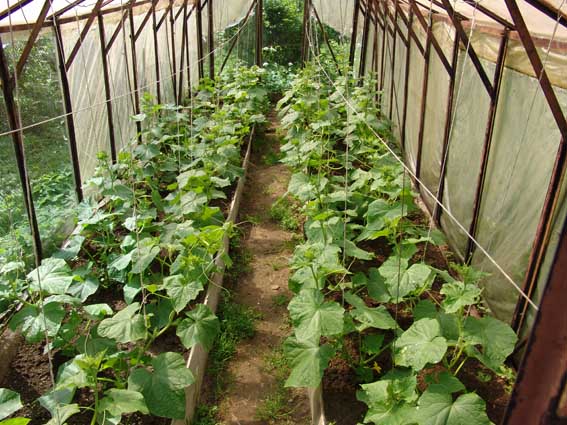
After 5 to 7 days, if the air temperature is 25 ° C or higher, the cotyledons will hatch. The film can be removed. Place the trays on a window or rack with lighting.
Seedling care
Transplantable seedlings have 3 to 5 leaves and are 25 days old. You don't need to be smart to grow it. Care rules are simple:
- watering seedlings if the soil is dry;
- fertilize at least once with a liquid complex fertilizer;
- highlight seedlings by placing a fluorescent lamp above the plants;
- harden at the age of 20 days (take out to the balcony, street);
- monitor the health of seedlings.
It remains to plant seedlings. The main thing is to know exactly when to plant.
Landing dates
First, we define the timing. The criterion will be the temperature of the topsoil in the polycarbonate greenhouse. For determination, you can buy a special thermometer.
The temperature must be measured correctly by placing the meter in the shade and not in the sun. A stable temperature of 14-15 ° C means that it is time to plant the cucumbers in the greenhouse. Usually in an unheated polycarbonate greenhouse, this is done in May, and in the presence of biofuel (manure) - in the last decade of April.
How to plant seedlings correctly
We will figure out how to plant cucumber seedlings in a greenhouse. The root system of young seedlings is delicate and easy to damage. Many gardeners put a pot of young seedlings in the water - this makes transplanting easier.
A lump of earth with roots is easily separated from the walls of the container. The soil moisture is optimal. The roots are not exposed to mechanical stress. How to plant seedlings correctly, you can watch the video - in the videos, the process is shown clearly. Let's figure out how to plant.
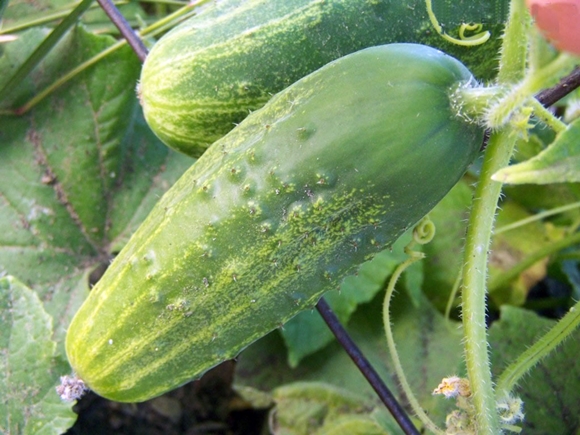
To prevent the hypocotal knee from suffering from all possible rot, it is not buried in the soil. The plant, together with a lump of earth, is placed in a dug hole, covered with soil and watered.
Gardeners advise not to neglect mulch (peat, humus, dry grass mown on the lawn) when sowing. A mulching layer of 5-10 cm is capable of:
- improve the microclimate;
- inhibits the growth of weeds;
- maintains the soil moisture level necessary for cucumbers;
- protects roots from cold and overheating;
- saves time and energy for loosening the soil around the cucumbers in the greenhouse.
You can correctly transplant cucumbers if you adhere to the planting scheme indicated in the leaflet attached to the seeds. The distance between two seedlings depends on the variety. Densely planted plants are more likely to suffer from fungal infections, aphids, powdery mildew.
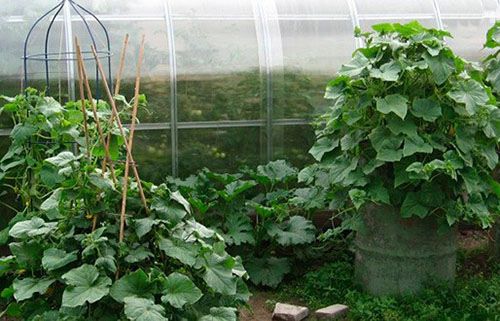
When in doubt about how to plant young cucumbers correctly, place all holes 35 cm apart, leaving wide aisles of 60 - 75 cm.
Cucumber is a liana that needs support:
- for the full development of cucumbers in the greenhouse;
- increasing the illumination of cultivated bushes;
- good ventilation;
- protecting the crop from infection in the soil.
How to make a trellis for cucumbers in a greenhouse was described above. Note that natural twine serves well during the season. The photo of the cucumbers after planting in the greenhouse shows how they are attached to the trellis.
We organize the right care
Planting cucumbers in a greenhouse does not take a gardener much time. The transplanting of cucumbers ends in June and the main care of greenhouse plants begins:
- bush formation;
- top dressing (root, foliar);
- watering;
- maintaining optimal air and soil temperature;
- disease prevention and control;
- protecting cucumbers in the greenhouse from pests;
- lash garter;
- collection of zelents.
Formation
We figured out how to plant cucumbers, now you need to understand how to form them. Before replanting cucumbers, a trellis was built and a rope (twine) was tied in front of each hole. 5 days after the transplant, the lashes must be attached to the trellis.
As they grow, they need to be wrapped around the string. Do this in the internode area. The central shoot, which has reached the top of the trellis, must be thrown over the upper wire (bar), pinched the crown when it drops down 40 cm. This completes the formation of the central shoot.
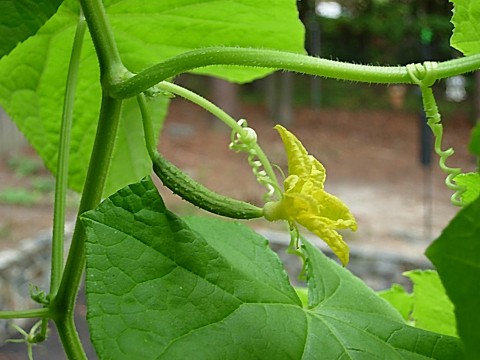
Lateral shoots grow throughout the growing season. Remove all shoots from the lower 4 sinuses. Lateral shoots (braids) are not needed in this part of the stem, because they will slow down the growth of the central shoot, pull all nutrients onto itself.
Sinuses 4, 5, 6 partially blind, leaving 1 ovary (bundle) each. In the next 3, 4 sinuses, leave 2 ovaries each, higher - 3. Thanks to this scheme, you can get a good cucumber bush formed into one stem.
Watering
Cucumbers love moisture. Even in such a simple activity as watering, there are peculiarities. For example, the quality and temperature of water for irrigation, which affects not only the general condition of plants, but also the quality of the crop.
Water for irrigation needs warm (23 - 25 ° C) and settled water. Watering with cold water provokes rot, a delay in the development of the root system, and promotes the accumulation of bitterness in the fruit.
In the heat, the soil in the greenhouse dries out quickly. You will have to water often - every 3 days. Excessive watering should be avoided, water should not stagnate on the ridge. The approximate volume per 1 m² in the flowering phase is 5 liters, in the fruiting phase - 10 liters. These rates are approximate. In fact, it all depends on the weather, temperature and humidity, the method and frequency of airing the greenhouse.
Top dressing
If you want a good harvest, use fertilizers. If you don't like "chemistry", use organic. Fertilizers not only contribute to the harvest, but also strengthen the immune system and extend the fruiting period until the middle, or even the end of September. This allows the greenhouse to be used at full capacity.
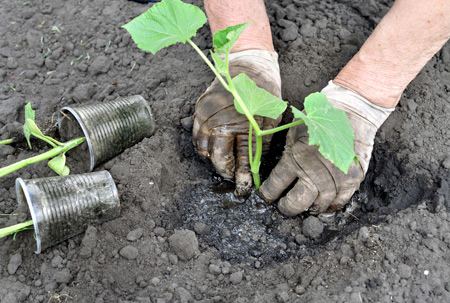
Top dressing are of two types: foliar, root.
Usually root dressing is timed to watering. Moist soil prevents the roots from getting burned in contact with an aqueous solution of fertilizers.
The following can be used as mineral fertilizers for cucumbers grown in a greenhouse:
- Superphosphate.
- Urea or ammonium nitrate.
- Borofosku.
- Potassium nitrate.
Before flowering and during flowering, the percentage of nitrogen in the aqueous fertilizer solution must exceed the phosphorus content. During fruiting, the plant's need for potassium and phosphorus increases.
Do not use urea and ammonium nitrate in the second half of summer. Nitrogen leads to an increase in green mass, a delay in fruiting.
You can use one of the popular fertilizers for dressing:
- Potassium humate.
- Agricola Vegeta.
- Ideal.
Fertilizers are poured at the root. If they get on leaves or fruits, they can cause burns. An important point: adherence to the dosage indicated in the instructions. An excess of fertilizer in fruit can harm health instead of the expected benefit.
How to control temperature
There are two periods in the season when real greenhouse temperature problems can arise. It is spring and nighttime temperature drops and sultry summer with midday heat.
If frosts are expected in the spring, and young seedlings are already sitting in the garden, but not yet attached to the trellis, they will save the covering material. In this case, everything is simple: sketch it out, it is better to roll it into 2 layers, and remove it in the morning after sunrise.
Another simple trick is plastic bottles with a cropped bottom. If such a structure is put on a seedling, it will suffer less from a drop in temperature. If there is a source of electricity near the greenhouse, you can turn on an infrared heater or heat gun at night.
Heat for plants is no less a problem than cold. At noon, the thermometer can reach 38 °, or even higher. Cucumbers categorically do not like drafts, which becomes a big problem in the heat. The greenhouse can be shaded from the sun by whitewashing the upper part or by stretching a white cloth under the ceiling. Reduces the temperature of watering paths, the installation of containers with cold water.
Diseases and pests
A rare summer resident manages to avoid cucumber diseases or pest infestations. There are years when, even with proper care, weather conditions (heat, rain) and the invasion of the flying form of aphids turn beautiful green plants into sick ones.

In wet weather, root rot is dangerous. In the initial stage, ash mixed with fluff lime can save. Proportion 3: 1. With this mixture, you need to powder the affected stems and nip the earth to them.
If aphids appear on the back of the leaf, ash will also help. You need to take 1 tbsp for a bucket of water, the water must be hot. After a day, add grated laundry soap to the infusion. Rinse the plants with this solution or spray with a sprayer.
You cannot cope with aphids alone. The procedure will have to be repeated at least once a week. After that, the ground under the bushes can be sprinkled with sifted ash.
Iodine helps to strengthen the immune system. It must be added to milk (35 drops per 1 liter) and in the evening spray all the plants in the greenhouse. In a couple of days, the vines will turn prettier and turn green with fresh foliage.
Gardener errors
Let's analyze the mistakes of gardeners that inhibit the growth of fruits. If there are few flowers and ovaries on a healthy-looking plant, check the variety. Most likely, the variety planted in a greenhouse needs pollination by bees.
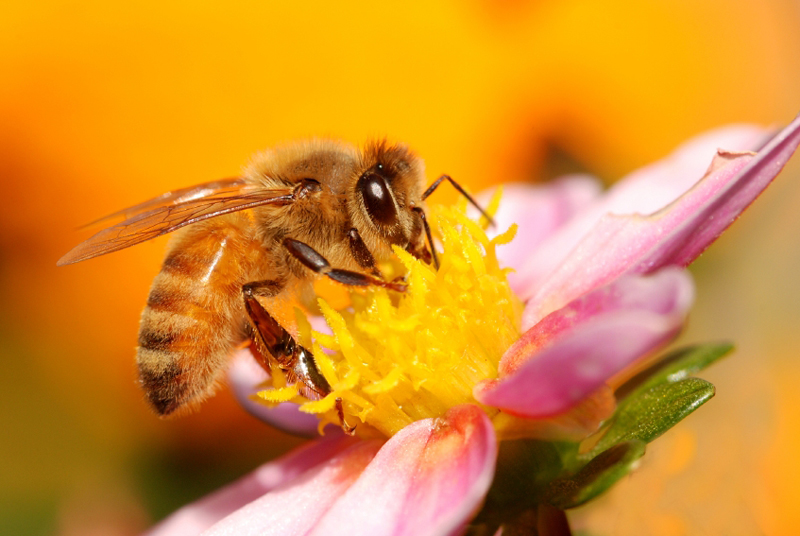
You can solve the problem: you just need to lure the main pollinators - bees - into the greenhouse. They will be attracted by sweet water, which needs to be sprayed on the cucumber ridge. Artificial pollination also helps. It is carried out by touching the center of the female flower with a male flower.
Barren flowers are another problem that a gardener may face when growing in greenhouse cucumbers... There may be several reasons that caused it:
- The plants were watered with cold water.
- The weather is cool, abundant watering, the soil is excessively moist.
- Plants are often planted and forgotten to form.
- Excess nitrogen in the soil.
You can solve the problem with a barrel, grass and water. The container needs to be filled with water, herbs are added there, you can throw a loaf of old bread for sourdough. The gas released during the fermentation of the grass stimulates fruit formation.
Collection of Zelentsy
When there is a wave of fruiting, the gardener should not relax. At least 2 - 3 times a week, planting should be inspected and collected zelents for the production of winter preparations, larger cucumbers for salads and pickling.
The shelf life of fruits is different for each variety.Variety labels will help determine where a variety grows and how it can be used. Many people make the mistake of planting salad and canning hybrids next to each other: salad cucumbers in the marinade spoil its quality.
Conclusion
If you stick to correct technology, growing cucumbers in a greenhouse will be a pleasant experience. The yield and the duration of fruiting in protected ground conditions are higher, which will quickly recoup the cost of the greenhouse.
